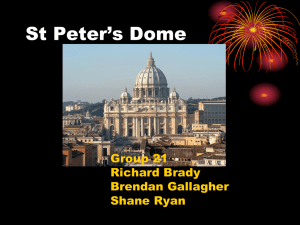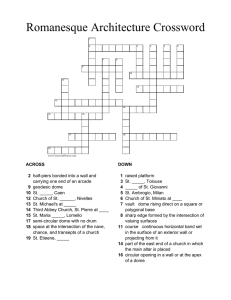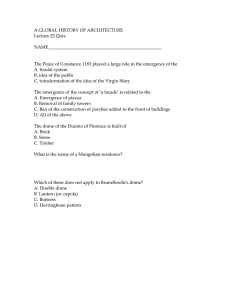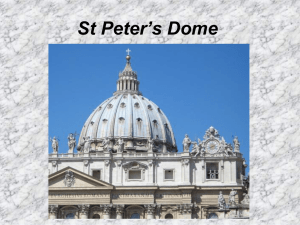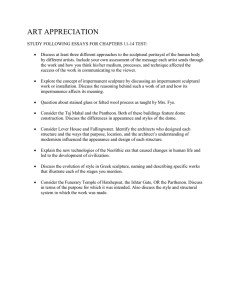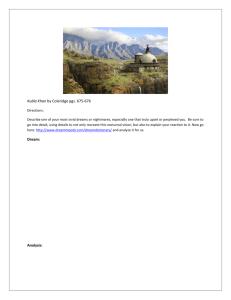Group 21- St Peters Dome.doc
advertisement
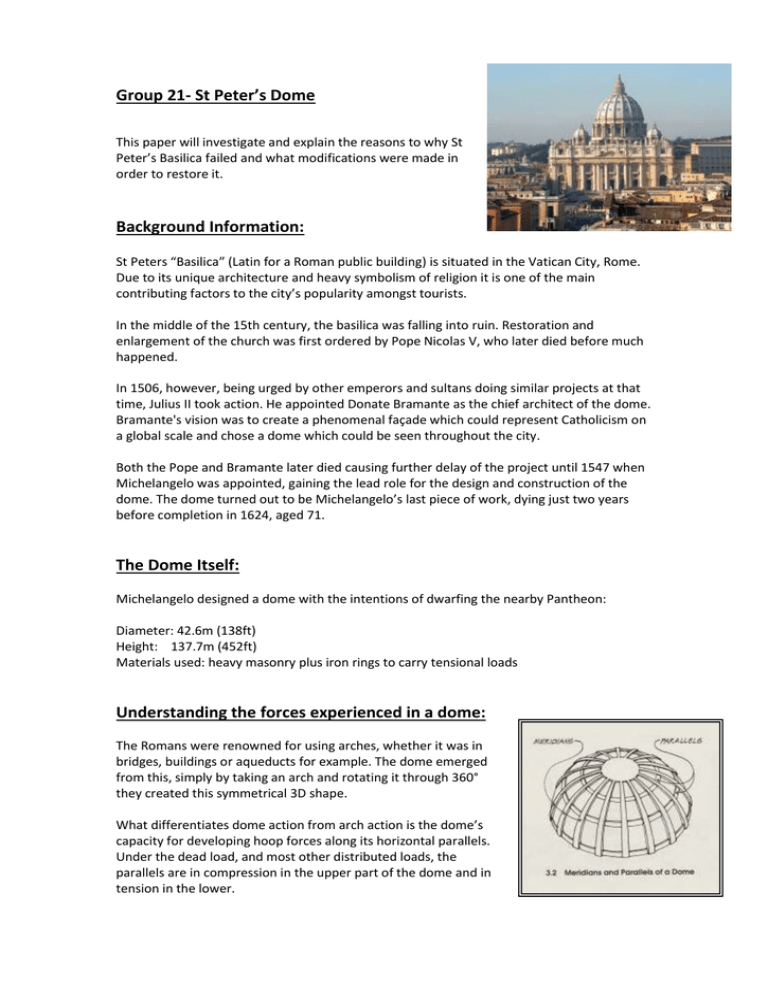
Group 21- St Peter’s Dome This paper will investigate and explain the reasons to why St Peter’s Basilica failed and what modifications were made in order to restore it. Background Information: St Peters “Basilica” (Latin for a Roman public building) is situated in the Vatican City, Rome. Due to its unique architecture and heavy symbolism of religion it is one of the main contributing factors to the city’s popularity amongst tourists. In the middle of the 15th century, the basilica was falling into ruin. Restoration and enlargement of the church was first ordered by Pope Nicolas V, who later died before much happened. In 1506, however, being urged by other emperors and sultans doing similar projects at that time, Julius II took action. He appointed Donate Bramante as the chief architect of the dome. Bramante's vision was to create a phenomenal façade which could represent Catholicism on a global scale and chose a dome which could be seen throughout the city. Both the Pope and Bramante later died causing further delay of the project until 1547 when Michelangelo was appointed, gaining the lead role for the design and construction of the dome. The dome turned out to be Michelangelo’s last piece of work, dying just two years before completion in 1624, aged 71. The Dome Itself: Michelangelo designed a dome with the intentions of dwarfing the nearby Pantheon: Diameter: 42.6m (138ft) Height: 137.7m (452ft) Materials used: heavy masonry plus iron rings to carry tensional loads Understanding the forces experienced in a dome: The Romans were renowned for using arches, whether it was in bridges, buildings or aqueducts for example. The dome emerged from this, simply by taking an arch and rotating it through 360° they created this symmetrical 3D shape. What differentiates dome action from arch action is the dome’s capacity for developing hoop forces along its horizontal parallels. Under the dead load, and most other distributed loads, the parallels are in compression in the upper part of the dome and in tension in the lower. Hoop parallels above 52°- compression Hoop parallels below 52°- tension Therefore, these hoop forces created act like a metal ring on a barrel of water, stopping the imaginary arches from buckling allowing domes to carry heavy loads with minor deflections, provided tensile stresses can be resisted in the lower part of the dome. Failure of the Dome: The masonry used to create the dome was extremely heavy. The self weight of the material was much greater than the yield strength that both the iron rings and natural hoop forces (described earlier) could carry, causing the bottom of the dome to push outwards. Self Weight >> tensile strength (iron rings + hoop forces) The lower part of the dome as a result failed due to tensional fatigue. This is a more ‘favourable’ failure of a structure because it is not sudden and tensional cracks can be seen, forming directly in the area stressed. This was the same case for the dome, cracks appeared at the bottom of the dome indicating that the tensile stresses were too large and something needed to be done. Adaptations to Dome: By the early 18th century, the cracks became serious enough for Vatican engineers to add several more iron rings to carry the tensile load. As a result, this small modification has prevented any possible collapse of the structure, thus allowing the church to remain the centre of Christianity, attracting millions annually. References: www.pbs.org www.sacred-destiantions.org www.aviewoncities.com http://en.structurae.de/structures/data/index.cfm?ID=s0001062 “Why Buildings Fall Down” – Levy and Salvadori
